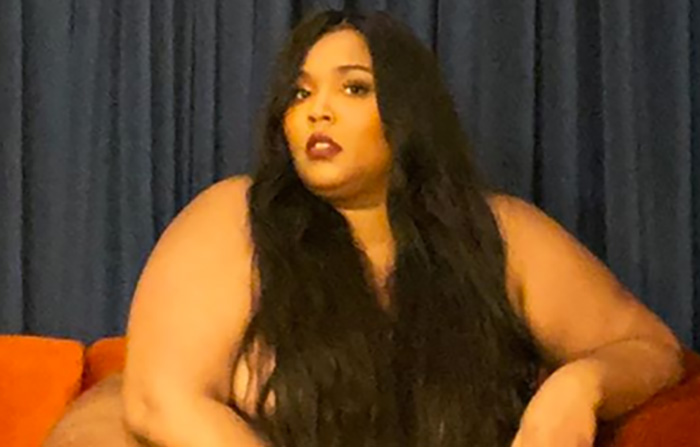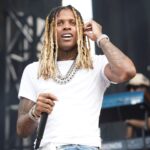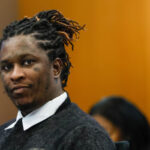 In a previous editorial, I shared three reasons that Black men matter in the fight against HIV/AIDS, whether they’re straight, gay or bisexual. To summarize, Black men matter because Black men–straight, gay, bisexual or confused–are at disproportionate risk for HIV infection. Black men matter because they can play a critical role in protecting their partners. Black men matter because they also play a vital role in protecting their children. But Black men have largely been absent from the fight, particularly heterosexuals. Here, we look at some of the reasons.
In a previous editorial, I shared three reasons that Black men matter in the fight against HIV/AIDS, whether they’re straight, gay or bisexual. To summarize, Black men matter because Black men–straight, gay, bisexual or confused–are at disproportionate risk for HIV infection. Black men matter because they can play a critical role in protecting their partners. Black men matter because they also play a vital role in protecting their children. But Black men have largely been absent from the fight, particularly heterosexuals. Here, we look at some of the reasons.
Over the years, only a handful of straight Black men have actively and publicly fought HIV/AIDS. Among them are notables like Beny J. Primm, M.D., one of the world’s leading experts in HIV/AIDS and substance abuse; Jerry Lopes, head of American Urban Radio Network; award-winning journalist George Curry; Dallas-based clinician and HIV expert M. Keith Rawlings, M.D.; David Satcher, M.D., Ph.D., the former surgeon general who once ran the Morehouse School of Medicine and now runs the Satcher Health Leadership Institute there; and the head of the Rainbow PUSH Coalition, the Rev. Jesse Jackson. There are a number of others, but they are exceptions that prove the rule. As a whole, brothers in the barbershop have not been actively involved in fighting HIV.
I think that this has happened for a number of important reasons. First, heterosexual Black men mistakenly believe that HIV/AIDS is not about them–that they’re not at risk, and few Black straight men get infected. It’s no surprise that they harbor this misperception: Public health officials and AIDS activists have made little effort to communicate the magnitude of the epidemic among straight Black men. And when that message is conveyed about straight Black men, it is only within the context of demonizing them. We’re quick to talk about brothers on the down low–supposedly straight men who are immoral sociopaths knowingly infecting women–or inmates who are either victims or perpetrators of prison rape and come out of prison and infect women.
Second, homophobia is real. Rightly or wrongly, many straight Black men still perceive HIV/AIDS as a “gay disease.” When a straight Black man does join in the fight, his sexuality is called into question. Finally, heterosexual Black men have not been invited into the conversation about HIV/AIDS, a dialogue that has been taking place for almost 30 years. When they do try to participate, they are often met with hostility–or attacked for not having been involved earlier.
Given these dynamics, it’s not surprising that when the subject of HIV/AIDS comes up, many Black straight men run for the hills. From their perspective, nothing good can come of their involvement in this conversation. What is surprising, however, is that many Black gay men have also abandoned the HIV/AIDS fight. Early on in the epidemic, the Black gay community was actively involved in the effort to confront AIDS. But in the recent past, other than Black gay men who are infected or affected, Black LGBT organizations and Black gay men in general have moved on to other issues. This is true in spite of data showing that in some urban centers, 46 percent of Black gay men are already infected. Black gay men represent nearly 20 percent of all new HIV infections in this country. America’s Black gay men–and particularly young men–are the single most at-risk population in the country–and perhaps even on the planet.
What needs to happen to engage Black men, whether they’re straight, bisexual or gay? Next week I’ll suggest some answers.
Yours in the struggle,
Phill -BlackAIDS

![Da Brat Marries Judy Dupart on 2.22.22 [PHOTOS]](https://hiphopucit.com/wp-content/uploads/2022/02/1645669184565-440x264.jpeg)
![Drake Reveals Photos of His Son Adonis [Photos]](https://hiphopucit.com/wp-content/uploads/2020/03/Drake-and-on-Adonis-HHUCIT.jpg)

![Megan Thee Stallion – “BOA” [NEW VIDEO]](https://hiphopucit.com/wp-content/uploads/2024/05/Megan_Thee_Stallion___BOA__Official_Video__1_12_screenshot-440x264.jpg)
![Doechii Feat. JT – “Alter Ego” [NEW VIDEO]](https://hiphopucit.com/wp-content/uploads/2024/05/Screenshot-of-Doechii-and-JTs-Al-440x264.png)
![Young Thug Feat. Drake Drop – “Oh U Went” [NEW VIDEO]](https://hiphopucit.com/wp-content/uploads/2023/07/Young-Thug-and-Drake-1014x570-1-440x264.png)





